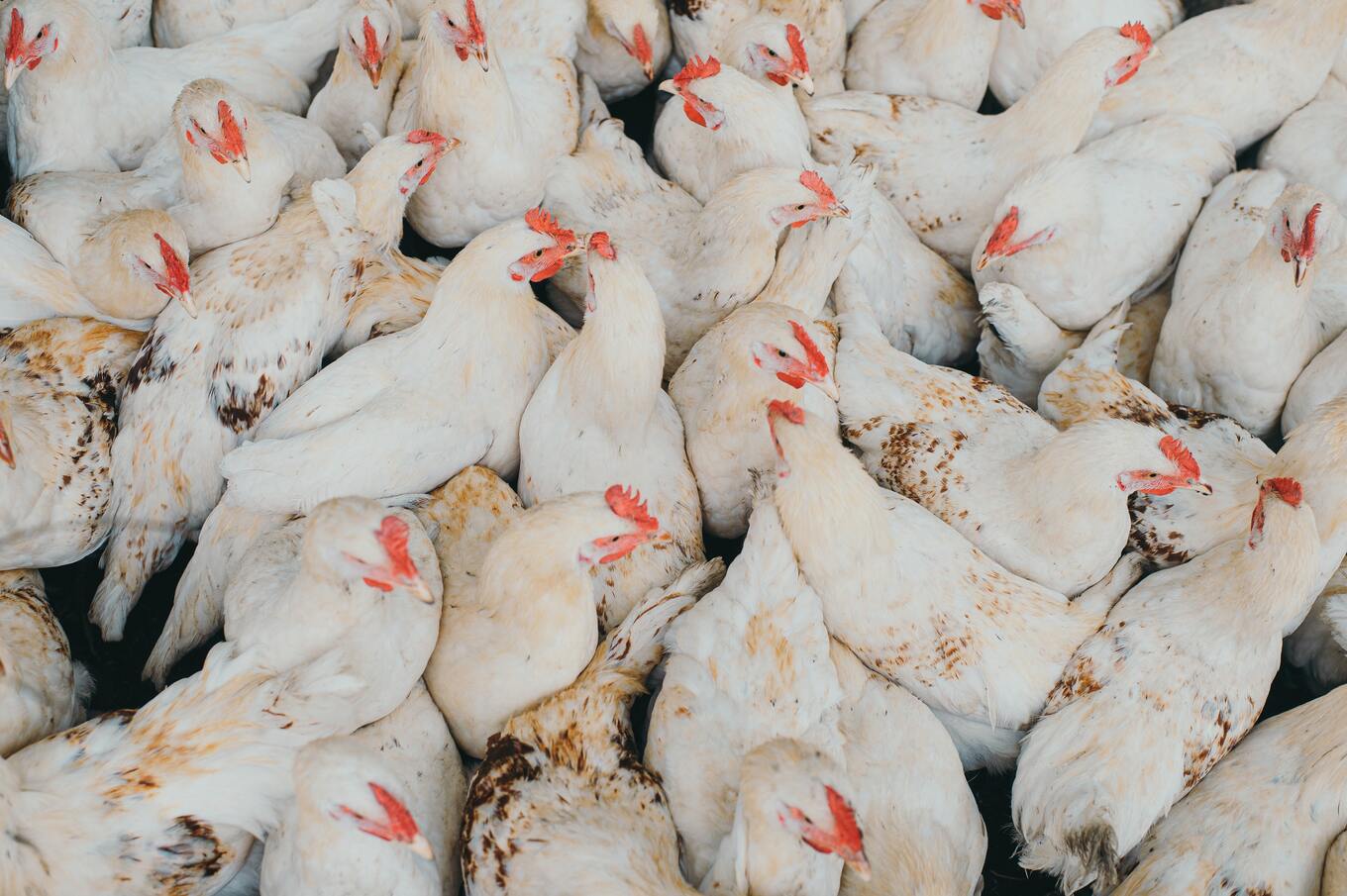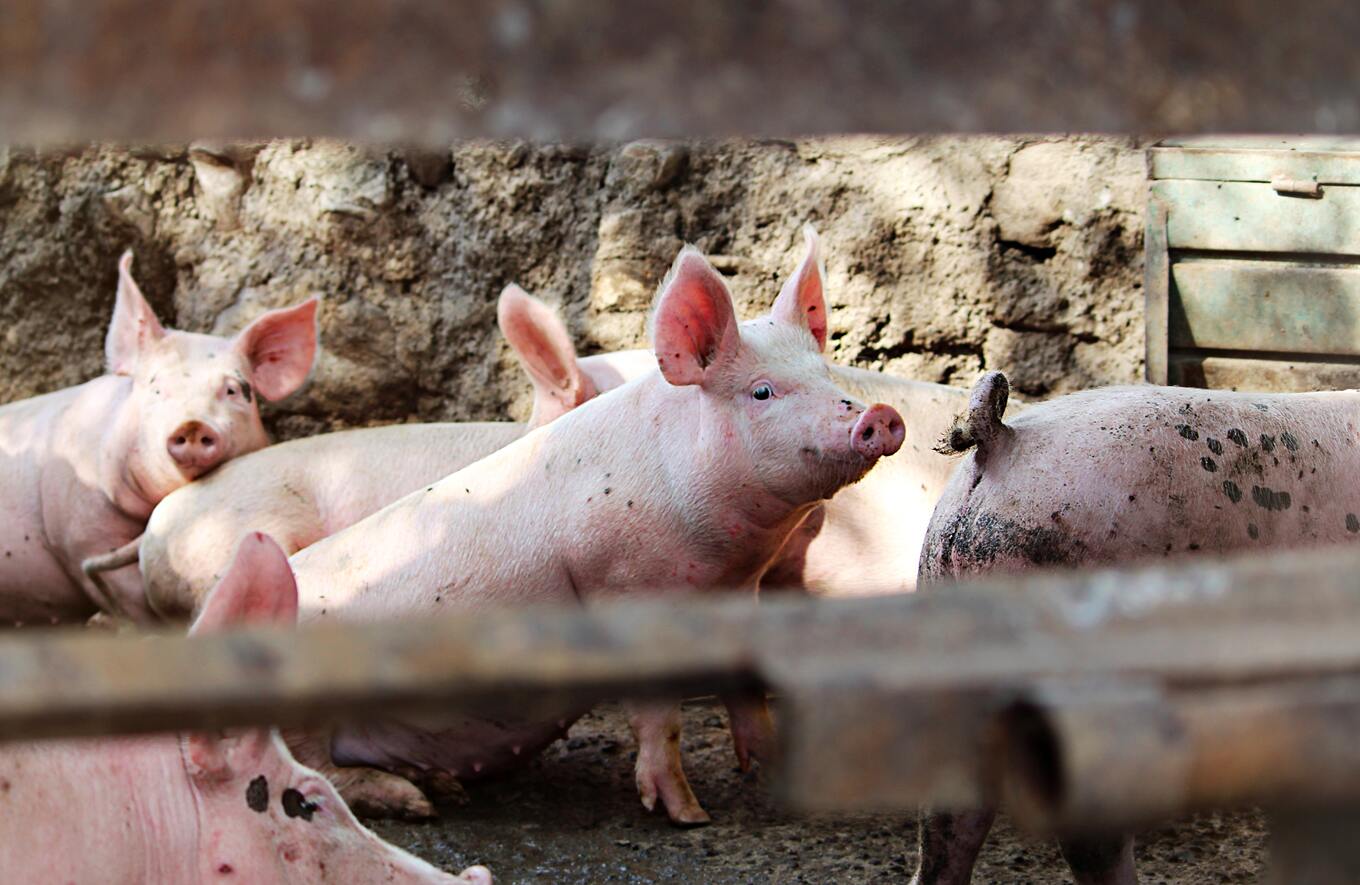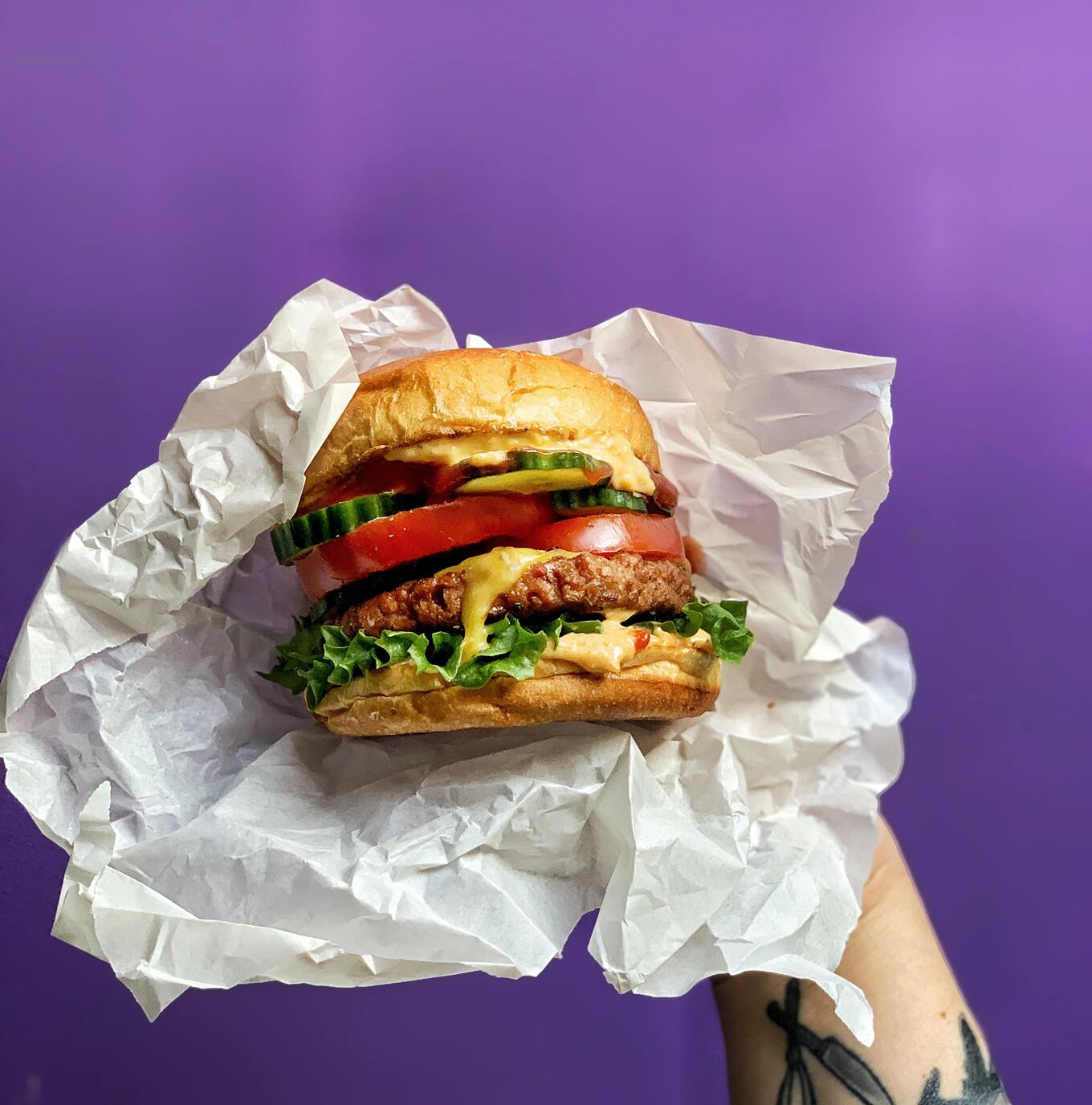In 1800s America, when life was far more rural for most, backyard chickens were a common sight in many households. Families would keep birds outside, regularly collecting their eggs to eat, and only occasionally slaughtering them for the dining table. This image of a picturesque free-range life, in harmony with humans, is what many still envision when they think about where animal products come from. But sadly, in the modern-day US, and indeed most of the world, this is no longer the case.
In the 1920s, broiler farming—raising chickens specifically for meat production—was introduced for the very first time. Farmers started raising birds in their thousands to maximize profit, and the era of industrialized factory farming began. Now, research suggests that most farm animals, not just chickens, but also cows, sheep, pigs, and turkeys, are raised on factory farms for the food industry. In fact, in the US, one study estimates that around 99 percent of farm animals come from industrialized farms.
But what exactly is factory farming? Is it ethical? And how is it impacting the environment? Here, we take a closer look at the industry, but also some of the alternatives available.
 Unsplash
Unsplash
What is factory farming?
While small family farms used to be the norm in many countries, this has slowly changed with the rise of factory farming, which is a system of intensive, industrialized animal agriculture. Every year, billions of animals around the world are raised on these farms, which cram in as many animals as possible in order to maximize output and increase profit for the food industry.
In the US alone, research suggests there are around 250,000 factory farms in operation, many of which can hold thousands of animals. The average medium-large poultry factory farm, also referred to as a concentrated animal feeding operation, can hold around 125,000 broiler chickens. A medium-large pig farm is usually home to around 2,500 pigs, while around 30,000 hens can live on medium-large egg industry factory farms.
Is factory farming ethical?
Most animals are crammed together on factory farms, with very little space to perform any of their natural behaviors. On chicken factory farms, research suggests most birds have little more room than the size of an A4 piece of paper. They are also bred to grow unnaturally large at a fast pace so that their bodies produce more meat. On intensive pig farms, sows are repeatedly artificially inseminated and often kept in gestation crates, which are so small, they can’t turn around. The story is similar for cows, turkeys, sheep, and other farm animals.
During their short lives, factory-farmed animals often suffer from physical pain (with chickens, for example, their legs can buckle as their bodies are bred to unnatural sizes), as well as mental distress. The bottom line is that factory farming’s industrialized methods were designed to prioritize production and profit, not animal welfare.
But animal cruelty isn’t the only reason factory farming is considered unethical by many. Because of the cramped, unhygienic conditions, industrialized farming is a breeding ground for disease. This means that antibiotic use is prolific across the industry. In fact, some research suggests that almost 75 percent of antimicrobials are given to farm animals. But the consequences of this are catastrophic. As a result of excessive drug use, the meat industry may be driving antibiotic resistance in humans.
And on top of this, it turns out, factory farming is detrimental to the planet, too.
BECOME A VEGNEWS VIP: Get exclusive product deals, freebies, and perks galore!
 Pexels
Pexels
Factory farming’s environmental impact
Animal agriculture contributes to a number of major environmental issues. For one, it’s responsible for around 14.5 percent of greenhouse gas emissions, according to the United Nations.
Cows, in particular, are responsible for high methane emissions, a greenhouse gas around 25 times more potent than carbon dioxide. On average, one cow belches around 220 pounds of methane into the atmosphere every year. In the US, there are around 30 million cows being raised on factory farms in the beef industry, plus around nine million in the dairy industry.
Factory farming is also linked with issues like deforestation (beef farming is the top culprit of tropical forest destruction), as well as air pollution and water pollution. The latter often happens as a result of manure overflow into local waterways, like streams and rivers. It’s harmful to underwater ecosystems, but it’s also dangerous for humans too, as it can contaminate drinking water. In October 2022, a lawsuit was filed against the Environmental Protection Agency (EPA) for not doing enough to regulate this pollution from factory farms.
The lawsuit was filed by 30 environmental groups, and it included the declaration of Julie Duhn, a resident of Iowa, where more than one-third of the factory-farmed hogs in the US are raised. “There’s just so much wrong and it just feels urgent,” she told the Guardian. “Water is essential to life and when you can’t feel comfortable drinking it, let alone swimming in it, that seems pretty urgent to me.”
Mapping factory farms
Feeding all of the world’s factory-farmed animals is incredibly resource-intensive. Most pigs, for example, eat corn and soy, the latter of which is also linked to high rates of deforestation. In fact, according to one recent report that mapped out the world’s food system, pigs have the greatest environmental burden because of the resources it takes to produce their feed.
But cow farming isn’t far behind, suggests the study—which was put together by 16 researchers from several different universities, including the University of Leeds and the University of Santa Barbara—as the dairy and beef industries take up around 25 percent of all agricultural land.
After creating a digital map to show just how much pressure animal agriculture and factory farming place on the environment, the researchers discovered that the worst offenders (responsible for nearly half of food’s impact on the planet) were China, the US, India, Brazil, Pakistan, and India.
But this doesn’t mean other countries are off the hook. A few initiatives have tried to map out factory farms in order to drive home just how prevalent the factory farming system is in many countries around the world.
Compassion in World Farming (CiWF), for example, created a map of the UK, which shows all of the areas with the highest concentrations of indoor-reared livestock. In North Yorkshire, it found there are more than 7.2 million animals confined to indoor factory farms. And in Norfolk, there are more than 12.3 million.
“This is the hard-to-believe reality of factory farming that has spread across the country to satisfy our appetite for cheap meat, dairy, and eggs, at a great cost to animal welfare, human health, and the environment,” CiWF notes.
 Unsplash
Unsplash
Alternatives to factory farming
Factory farming is a threat to our health and the environment, and it’s grim for the animals, too. But it’s not the only way to produce food. Many scientists and researchers have advocated for a switch to an animal-free food system instead, which centers around plant-based agriculture.
In 2021, research from Our World In Data suggested that if we collectively shifted to a reliance on plant-based agriculture instead of animal agriculture, we could reduce land use by 75 percent, which would help to mitigate issues like deforestation and biodiversity loss.
And in 2022, researchers from Stanford University and the University of California suggested that phasing out animal agriculture and switching to a global plant-based diet, would “effectively halt the increase of atmospheric greenhouse gases” for a period of 30 years. This, in turn, would allow humans the time to figure out a transition away from fossil fuels.
We may not have transitioned away from animal products yet, but the plant-based food industry is growing. By the end of this decade, it’s predicted to reach more than $162 billion. If you’re looking to disengage from the factory farming system and try more plant-based foods, we’ve put together a handy beginner’s guide to eating plant-based.
For more vegan guides, read:
JUMP TO ... Latest News | Recipes | Guides | Health | Subscribe









